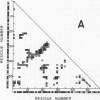Abstract
A hypothesis for protein folding is proposed, in which the native structure is formed by a three-step mechanism: (A) formation of ordered backbone structures by short-range interactions, (B) formation of small contact regions by medium-range interactions, and (C) association of the small contact regions into the native structure by long-range interactions. Empirical interaction parameters (free energy of formation of a contact) between amino-acid residues were evaluated from the frequency of contacts in the x-ray structures of native proteins. On the basis of this mechanism, a Monte Carlo simulation of protein folding (with an accompanying decrease in the total contact free energy) was carried out for bovine pancreatic trypsin inhibitor. The predicted three-dimensional structure is in fairly good agreement with the experimental one.
Full text
PDF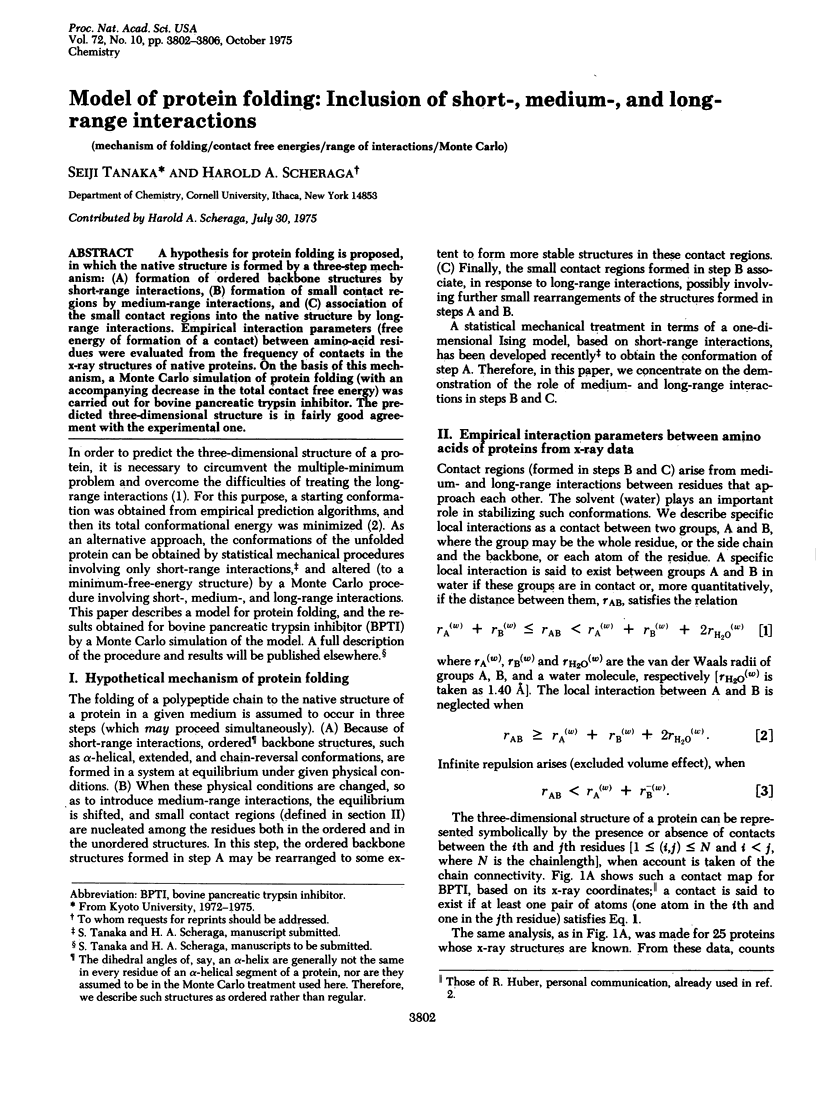
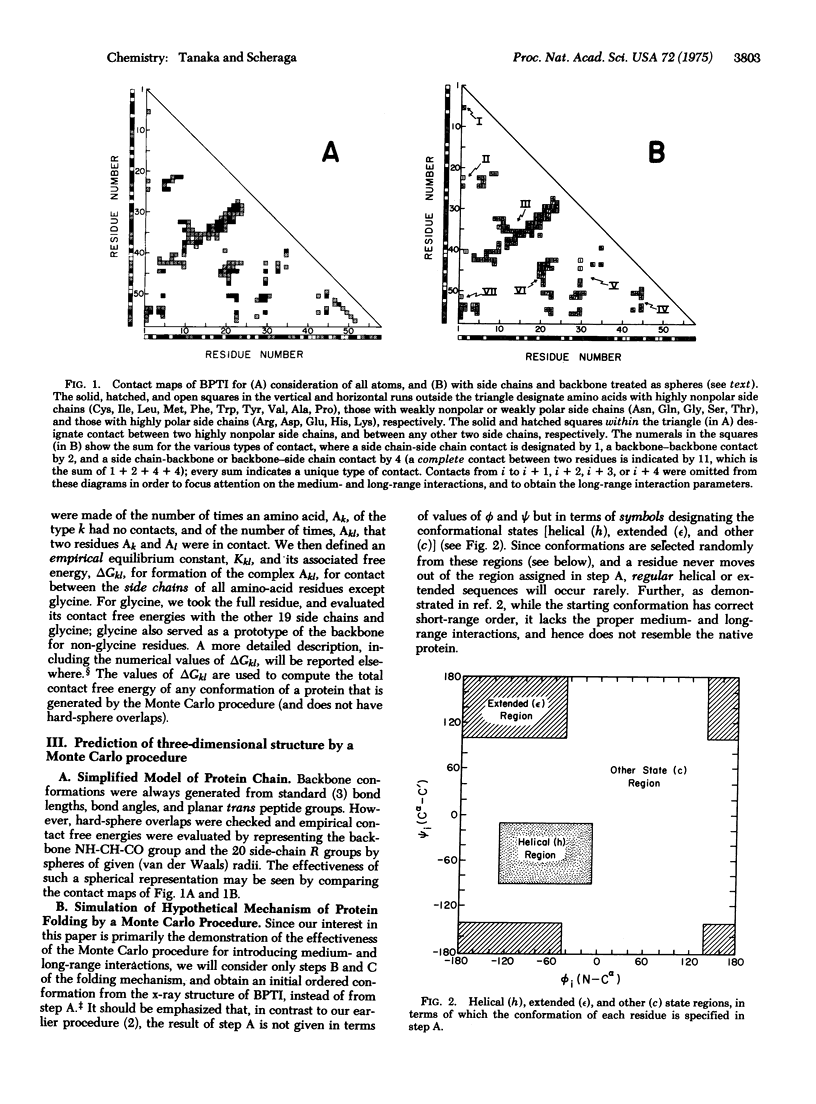
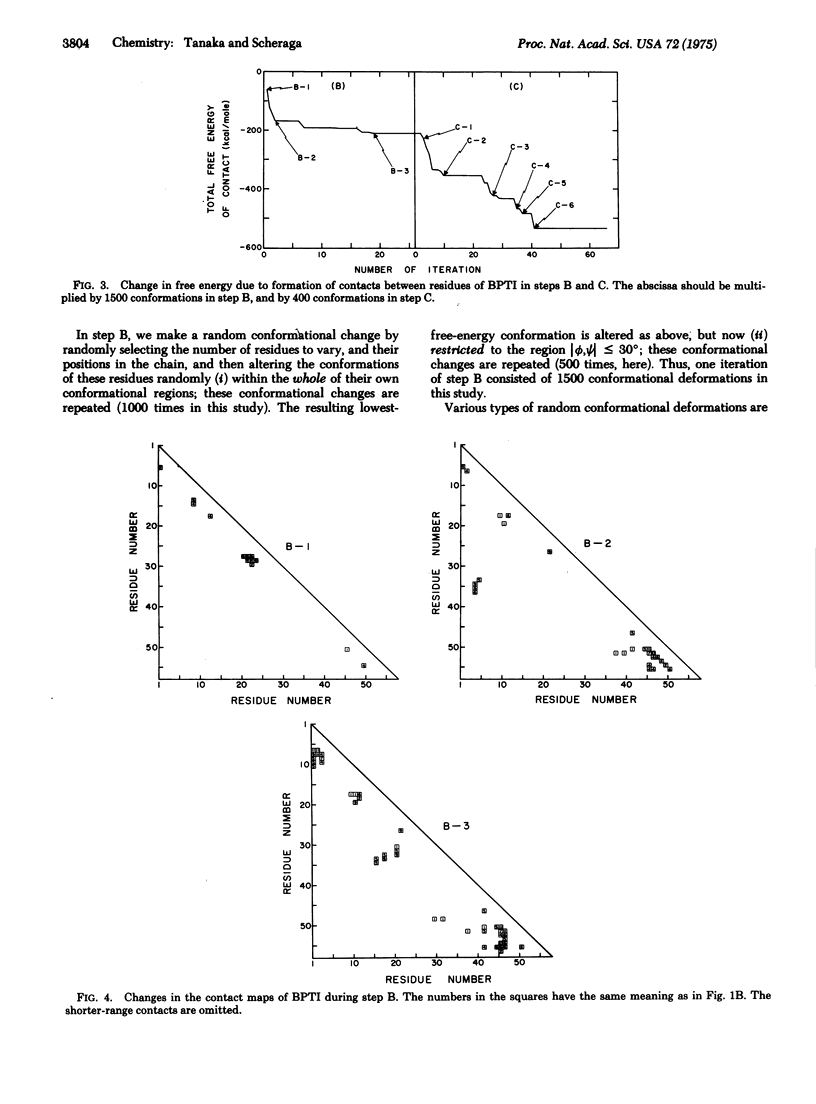
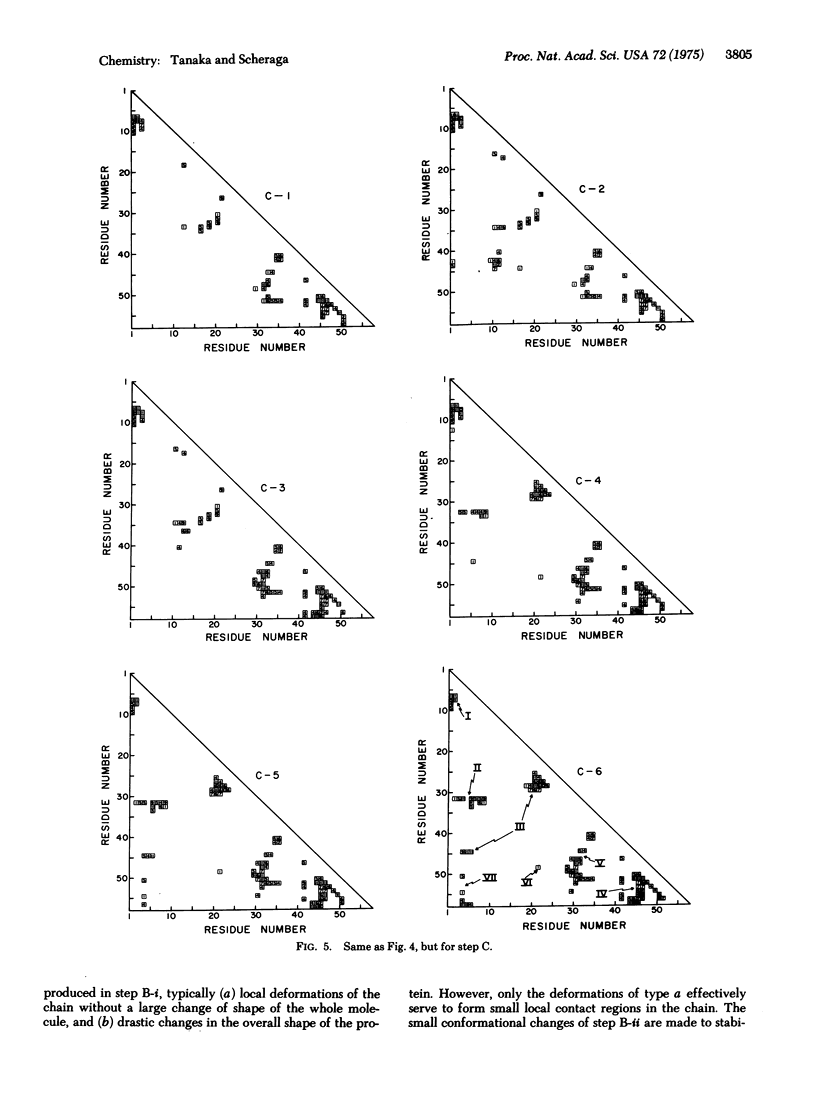
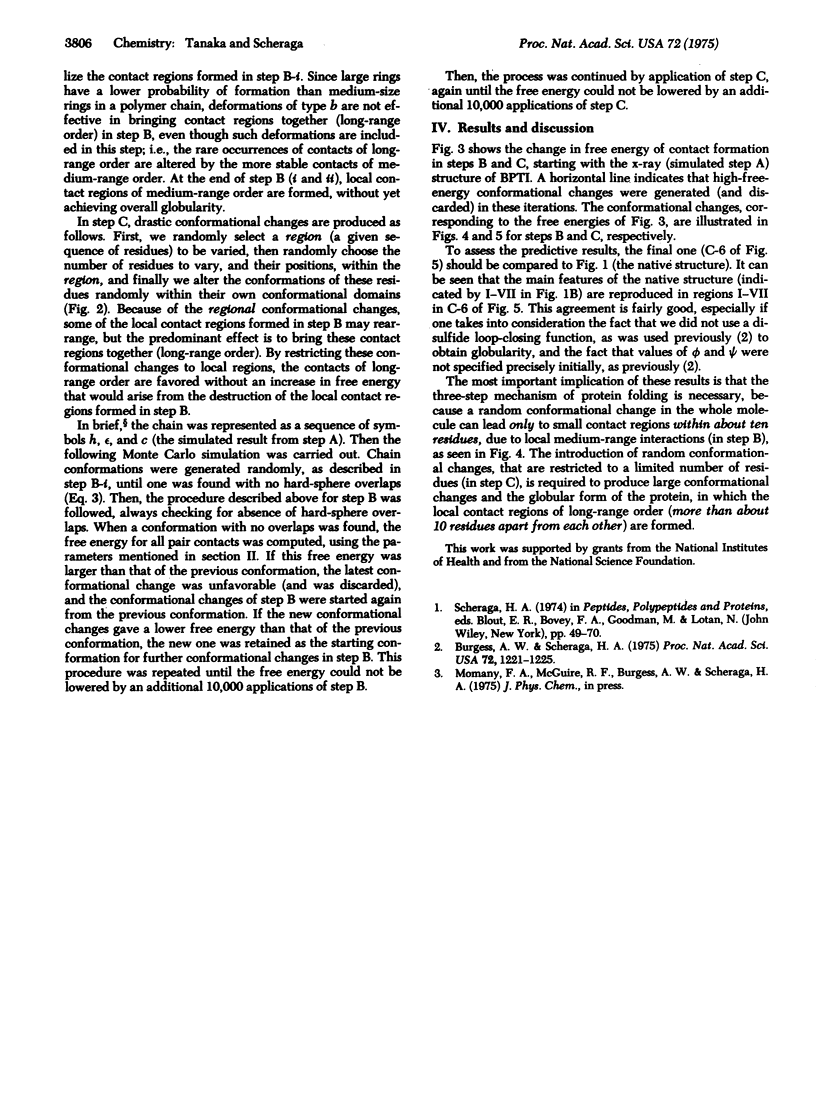
Images in this article
Selected References
These references are in PubMed. This may not be the complete list of references from this article.
- Burgess A. W., Scheraga H. A. Assessment of some problems associated with prediction of the three-dimensional structure of a protein from its amino-acid sequence. Proc Natl Acad Sci U S A. 1975 Apr;72(4):1221–1225. doi: 10.1073/pnas.72.4.1221. [DOI] [PMC free article] [PubMed] [Google Scholar]



